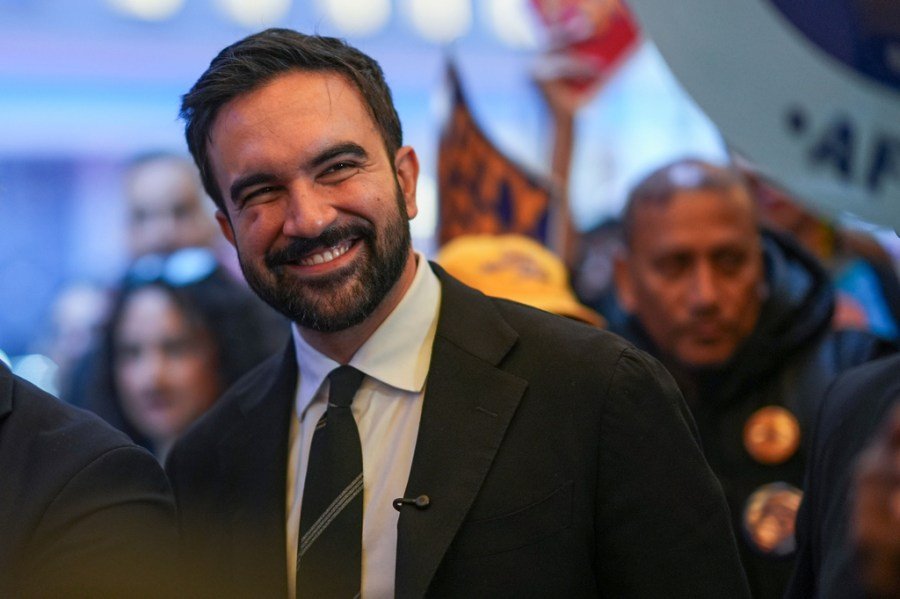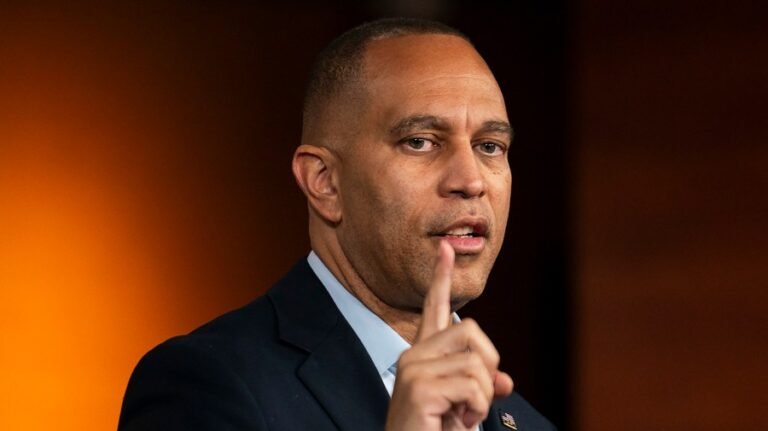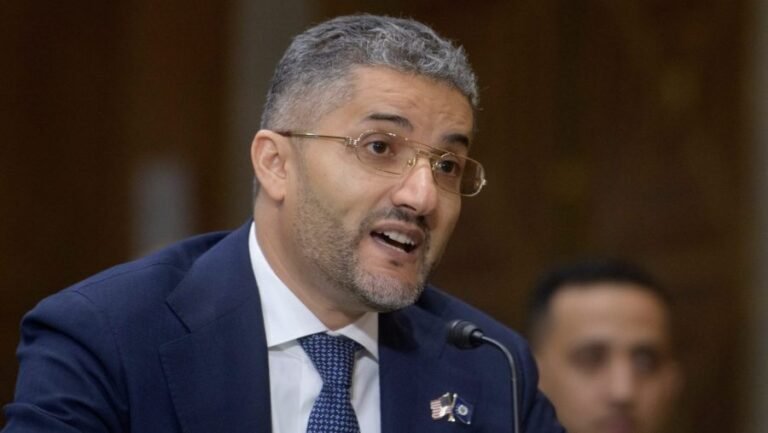
Democrats are lost and are the first to acknowledge they’re having an identity crisis.
Do they lean to the left like Zohran Mamdani, the New York City mayoral candidate and self-proclaimed democratic socialist? Or do they tack more to the center like Arizona’s Sen. Ruben Gallego, who last year was able to win not just Democrats but supporters of President Trump when he won a seat in the U.S. Senate?
There are Democrats who believe the answer is to lean left, who point to the energy reflected in the progressive rallies held earlier this year by Sen. Bernie Sanders (I-Vt.) and Rep. Alexandria Ocasio-Cortez (D-N.Y.).
And then there are others who argue winning the 2028 presidential election will require moving back to the center to appeal to not only their base but to moderate voters who might otherwise stay home or vote Republican.
It’s unclear that either side is winning this internal battle a little more than a year before the midterm elections, nearly 12 months after the devastating defeat the party felt in the presidential election.
“Fundamentally politics is very simple. It’s a math question,” said Steve Schale, the Democratic strategist who ran former President Obama’s successful Florida operation during the 2008 presidential campaign. “To win, you’ve got to get to 50 percent plus 1. And if we’re going to win places where we have to win, you have to get a base excited to show up and give a s—, but you also have to frame your message to median voters, so they say, ‘Yeah, I can join this coalition.’”
“I’ve yet to see the evidence that people on the left win in places where we currently lose,” Schale added. “And until someone shows me how excitement on the left gets me to 50 percent plus 1, I don’t know how that argument makes sense whatsoever.”
A second strategist said Democrats “never learn their lesson.”
“It’s amazing to me how anyone could conclude that they key to winning in 2028 is to run left of center,” the strategist said. “They are completely delusional.”
Plenty of Democrats, however, think the party needs to move left.
These voices point not only to the success of Mamdani in the New York City mayoral race but also to the base’s ability to hold the party’s leadership accountable this year.
“The Tea Party comparisons are fair in one respect: The grassroots of the Democratic Party are ahead of the party leadership, dragging leadership along,” said Democratic strategist Christy Setzer.
Setzer argued Democratic leaders in Congress shut down the government because of the liberal base.
“Does anyone think congressional Democrats would have refused to bail out the GOP on the budget had it not been for the grassroots?” she said.
Setzer pointed to the “No Kings” rallies across the country last weekend as proof of the energy.
“The 8 million people marching over the weekend weren’t just mad about the higher cost of groceries,” she said. “They also want action taken to stop the broad-daylight kidnappings of our neighbors, or college kids … hacking into our voter roles and personal taxpayer information.”
“If that’s a progressive position, then I guess the progressives are winning,” she added.
A Gallup poll in January found that 49 percent of surveyed Democrats and Democratic leaders “self identify as politically liberal, 43 percent as moderate and 6 percent as conservative.”
The survey also showed that 45 percent of so-called liberal Democrats would prefer that their party become more liberal while 22 percent said it should stay the same as it is. At the same time, 62 percent of moderate Democrats support a moderate shift for the party, while 22 percent think it should remain the same.
Authenticity, not the eternal left-versus-center debate, will really be the determining factor for candidates, strategists say.
“The biggest factor for presidential candidates running in 2028 won’t be whether they are labeled left or centrist,” said Democratic strategist Rodell Mollineau. “Presidential politics has become all about cult of personality.”
Democratic strategist Eddie Vale agreed, adding that the left-center narrative that has plagued the party in recent years is an archaic way of thinking.
“Saying a candidate or the party overall needs to fall in the correct place on a left-to-center policy spectrum is an outdated way to look at things that no real voter thinks about,” he said.
“Voters don’t care what D.C. think tank your views line up with. They are looking for authenticity and people who will help them.”
Vale pointed to Gallego’s Senate race last year as an example.
“People in Arizona voted for Trump over [former Vice President Kamala Harris] and at the same time voted for Gallego because they thought that both were authentic and going to look out for them,” he said.
In an interview with The New York Times last week, Gallego said Democrats lost because they wanted to talk about issues including abortion and democracy. And when they talked about the economy, it was centered on economic equality.
“They wanted to talk about the things they were comfortable talking about,” Gallego said. “They didn’t want to go where the voter was.”
Asked about Mamdani, Gallego acknowledged that he disagrees with some of his positions, including government-run grocery stores.
But Mamdani is proving what other Democrats haven’t been able to do, Gallego said.
“I think there’s a lot of Democrats that are missing the boat,” he said. “We don’t have to support Mamdani on everything; we could just disagree on some areas. But the fact is that he talks about affordability. He talks about trying to make people’s lives better. That’s resonating. And now we may not agree how he’s going to get there but let’s not ignore the lesson that he’s showing.”


